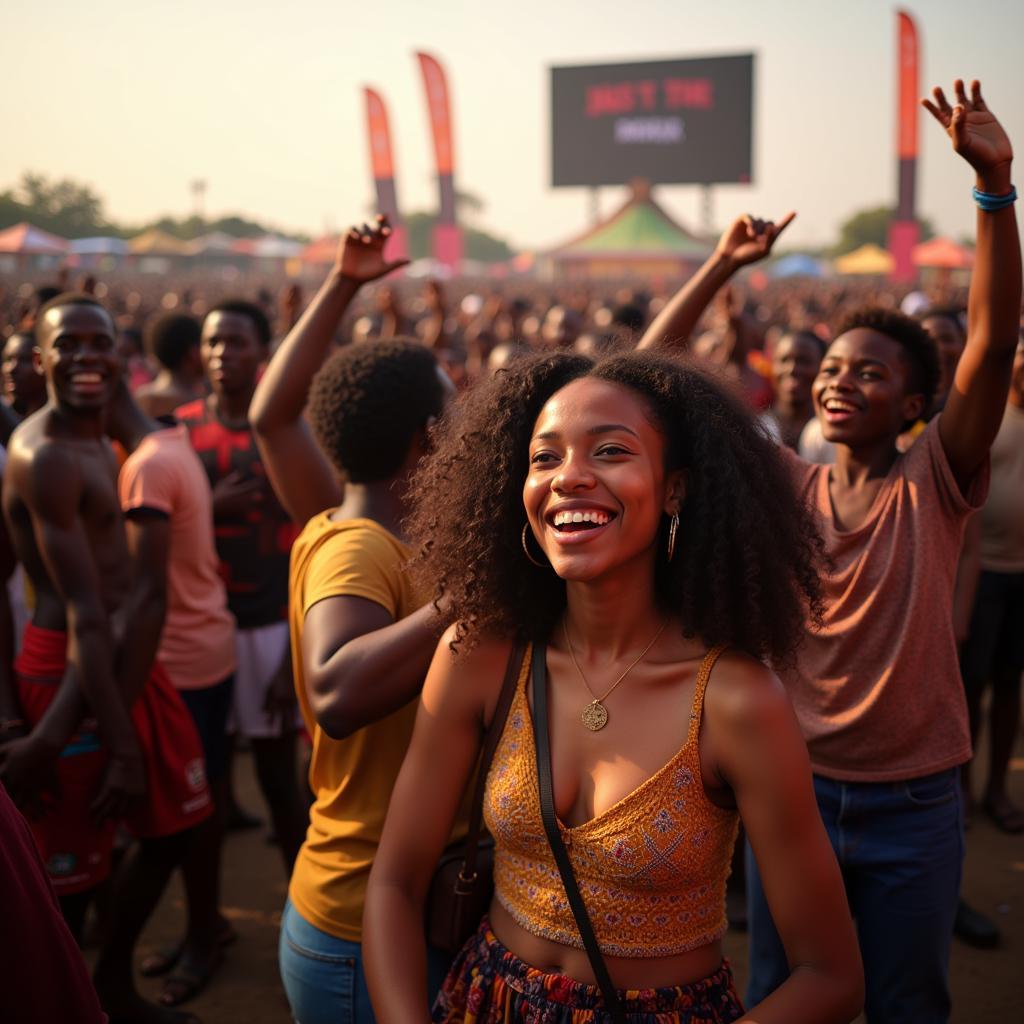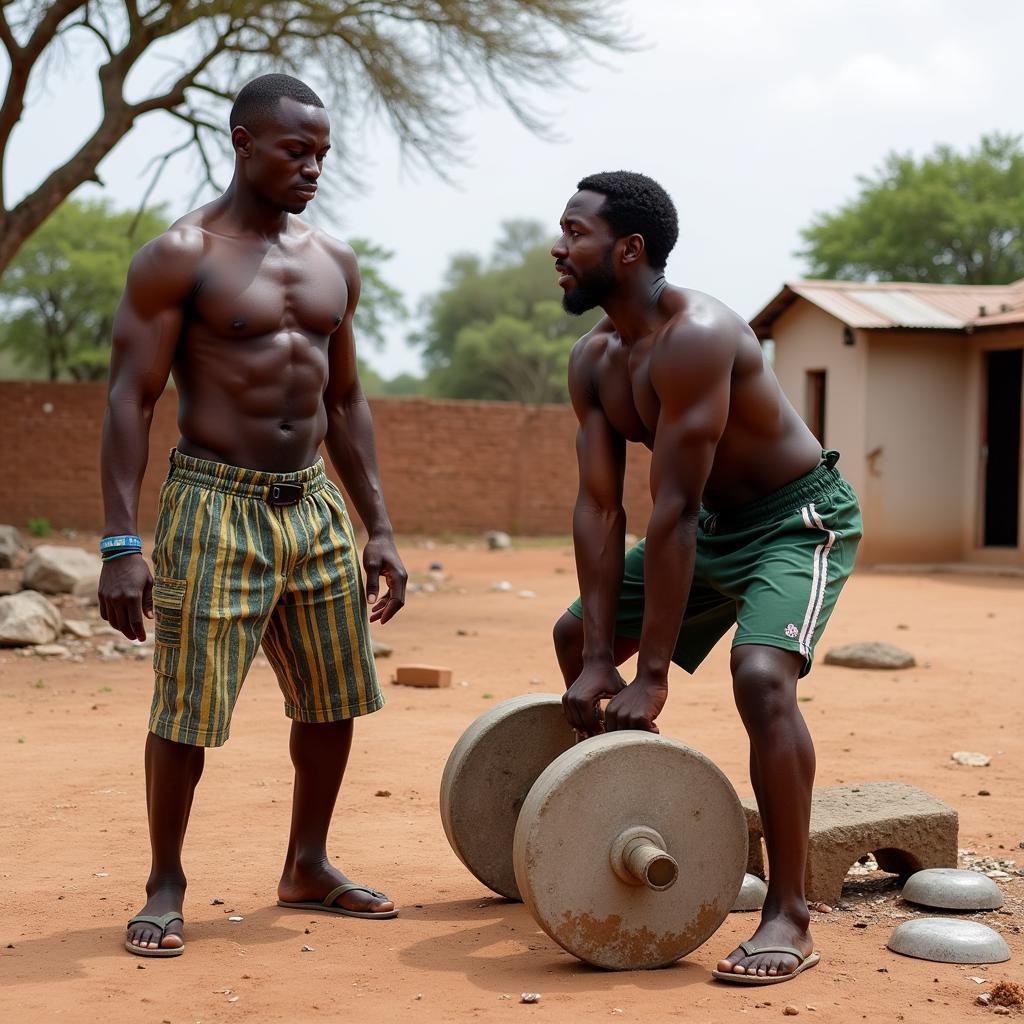Exploring the Vibrant World of African Chaabi Dances
African Chaabi Dances are a captivating expression of North African culture, pulsating with rhythm and echoing centuries of tradition. These energetic dances, often accompanied by lively music, offer a window into the heart of communities, celebrating everything from weddings and festivals to everyday life. Let’s delve into the rich tapestry of these captivating dance forms.
From the bustling marketplaces of Morocco to the vibrant celebrations in Algeria and Tunisia, chaabi dances resonate with a raw energy that captivates both performers and onlookers. These dances are more than just entertainment; they are a vital thread in the social fabric, connecting generations and preserving cultural heritage. Chaabi’s infectious rhythms and expressive movements are a testament to the resilience and creativity of North African communities.
What is Chaabi Music and Dance?
Chaabi, meaning “popular” in Arabic, encompasses various musical and dance styles that have evolved across north african countries. While sharing common threads, each region has developed its own distinct flavor of chaabi, reflecting local traditions and influences. The music typically features a blend of traditional instruments, such as the darbuka, oud, and violin, creating a rich and layered soundscape. The dances, in turn, mirror the music’s vibrancy, characterized by energetic footwork, expressive hand gestures, and often, a playful interaction between dancers.
Origins and Evolution of Chaabi Dances
Chaabi’s roots trace back to the working-class neighborhoods of early 20th-century North Africa. Emerging as a voice of the people, it provided a platform for expressing everyday joys and struggles. Over time, it evolved, absorbing influences from various musical traditions, including Andalusian music, Berber rhythms, and even Western popular music. This constant evolution has kept chaabi relevant and dynamic, ensuring its continued popularity across generations.
Regional Variations of Chaabi Dances
While the core elements of chaabi remain consistent, regional variations add a unique dimension to each style. Moroccan chaabi, for instance, often incorporates intricate footwork and graceful hand movements, reflecting the country’s rich artistic heritage. Algerian chaabi, on the other hand, is known for its high-energy performances and a more pronounced emphasis on rhythm. Tunisian chaabi features a blend of urban and rural influences, showcasing the country’s diverse cultural landscape. These regional nuances contribute to the overall richness and diversity of African chaabi dances.
The Role of Chaabi in North African Society
Chaabi dances play an integral role in social gatherings, weddings, and religious festivals, providing a vibrant backdrop for celebrations and communal bonding. These events often feature live chaabi bands, and the dance floor becomes a space for shared joy and expression. Beyond festive occasions, chaabi also functions as a powerful means of storytelling, preserving cultural narratives and passing down traditions through generations.
“Chaabi is more than just music and dance; it’s the heartbeat of our community, expressing our joys, sorrows, and everything in between,” shares Dr. Fatima El-Amri, a renowned ethnomusicologist specializing in North African music.
Learning and Experiencing Chaabi Dances
The best way to truly appreciate chaabi is to experience it firsthand. Many cities across north african countries offer workshops and classes for those interested in learning the art form. Even if you’re not a dancer, simply watching a live performance can be a mesmerizing experience. The infectious energy and passionate performances are sure to leave a lasting impression.
“The beauty of chaabi lies in its accessibility. Anyone can join in and experience the joy of this dance form, regardless of their background or skill level,” says Omar Ben Youssef, a celebrated chaabi musician and instructor.
Conclusion
African chaabi dances offer a vibrant window into the rich cultural tapestry of North Africa. From their humble beginnings to their enduring popularity today, these dances embody the spirit of community, resilience, and artistic expression. So, the next time you hear the pulsating rhythms of chaabi, let yourself be swept away by its infectious energy and immerse yourself in the captivating world of North African dance.
FAQ
-
What is the meaning of the word “chaabi”?
Chaabi means “popular” in Arabic. -
Which countries are known for chaabi music and dance?
Primarily Morocco, Algeria, and Tunisia, as well as other North African countries. -
What instruments are typically used in chaabi music?
Common instruments include the darbuka, oud, violin, and others. -
Where can I learn chaabi dances?
Workshops and classes are available in many cities across North Africa. -
What is the significance of chaabi in North African society?
It plays a vital role in celebrations, storytelling, and preserving cultural heritage. -
What makes chaabi dances unique?
Their energetic footwork, expressive hand gestures, and the vibrant music. -
How has chaabi evolved over time?
It has absorbed influences from various musical traditions, including Andalusian music, Berber rhythms, and even Western popular music.
Need assistance with planning a trip to North Africa to experience chaabi firsthand, or have questions about the culture? Please contact us: Phone: +255768904061, Email: kaka.mag@gmail.com, or visit our office at Mbarali DC Mawindi, Kangaga, Tanzania. Our customer service team is available 24/7.

